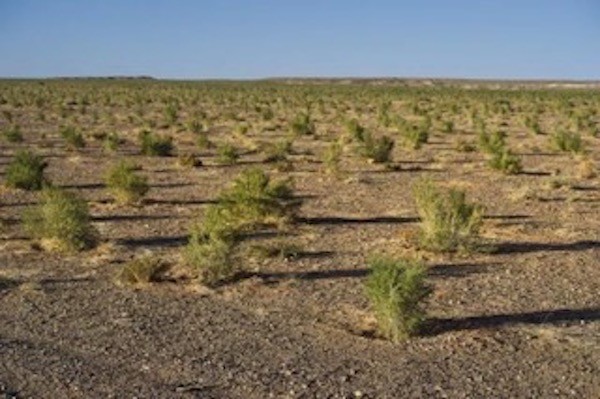Recently we were privileged to have a research project accepted and undertaken by the University of Sydney under their Post Graduate Masters of Sustainability Program.
TrinityP3 has been advocating a pivot to a more sustainable approach to marketing and also supplying carbon emission measurement using the CO2counter for over 8 years using our own developed and verified methodology. We felt it would be good to get some up-to-date research from a highly recognized source.
We posed the question ‘What is the carbon impact of both the production and consumption of internet advertising’?
TrinityP3 in conjunction with The Gaia Partnership acted as the sponsor and workplace mentor for two students and we helped narrow the research criteria to focus on social media advertising. This is a condensed paper from the students where they examine the GHG emissions from Facebook.
Below is a summary outlining the extensive research carried out by the students.
Is Social Media an Environmentally Sustainable Marketing Strategy?
By Yao Yang & Wanting Fu of University of Sydney as part of their Masters of Sustainability Programme Capstone Research Project 2017.
The Interactive Advertising Bureau (IAB) online advertising expenditure report (2016), indicated that the Australian online advertising market grew from $1.6 billion in 2015 to $6.8 billion for the full financial year ending 30 June 2016.
Online advertising is developing into the main method employed by the advertising industry. To achieve their marketing goals efficiently, companies are expected to create and produce more and more online advertising content, utilise the latest technology which in turn increases the amount of data in the market.
In a survey we conducted of customers’ attitudes towards online advertising, the results show that a lot of people have negative emotions about Internet advertising, such as traditional banner advertising, static banner advertising, and pop-up advertising.
However, respondents have a more neutral attitude, even positive attitude towards social media advertising. Therefore we observed an increasing number of marketers focusing on social media marketing.
Nevertheless, the environmental effect of online advertising, particularly Greenhouse Gas (GHG) emissions, remains uncertain. Additionally, many customers and marketers believe that internet advertising does not release GHG emissions; however, this is a false assumption.
The question that needs to be asked is will social media advertising be an environmentally sustainable marketing strategy? To attempt to answer this question let’s examine two of the elements: data usage and electricity usage.
The Formula for Calculating Carbon Emissions in Social Media Advertising
Facebook is the world’s foremost social media platform; it enjoys higher usage time per person than any other social media application. Therefore, this project will use Facebook’s advertising business for this research (Facebook, 2017).
In 2016, according to Facebook their total carbon footprint was 718,000 metric tonnes of carbon dioxide equivalent. Offices and other business activity accounted for 28% of the carbon footprint. The other 72% is from the data centres (Facebook, 2017).
Facebook currently offers several different advertising formats, such as photo, video, slideshow, carousal, collection, canvas and lead advertising. The most popular format is photo advertising, which takes the form of one image plus text. The size of the image is 1200628 pixels, the text limit is 90 characters and file size is approximately 154 KB (Social Media Image Sizes Cheat Sheet, 2017). We calculate that when customers see the photo advertising, the end user will consume 190 KB of data.
According to the methodology from The Gaia Partnership, there are three separate activities that make up the calculation of GHG emissions:
- The Design and Production of the content.
- Storage & Delivery.
- Consumption by end user.
The average quantity of carbon in a 1 MB file has been determined by Weber et al. (2010) and Aslan et al. (2017). The researchers conclude that 5g carbon dioxide equivalent is released when customers use 1MB of data. The intensity of emissions for Internet advertising delivery lies in the range of 256.28– 676.76 kg carbon dioxide equivalent per million impressions (Taylor & Koomey, 2008).
Another point to be considered is electricity usage. On average, electricity sources emit 554 g CO2 per KWh (Department of Energy’s Energy Information Administration, 2017). According to 2016 Australian Energy Statistics, the medium advertising agency will consume 100 KWh in one day, and producing one advertising photo will use an average 15 KWh.
The calculation formula is as follows:
Total carbon emissions (photo ads) = file size x 5g/MB + internet delivery x n1 + consumption by end user x 5g/MB x n2 + electricity use x 554g/KWh
n1 = impression number
n2 = user number
Thus, when one customer sees the photo advertisement 8.312 kg carbon dioxide equivalent will be released, and this quantity increases with the number of impressions, viewers and electricity usage. By the time that 1 million people have seen the photo advertisement, 1.425 tonnes of carbon dioxide equivalent will have been released. In terms of GHG emissions, this is the equivalent to the output from an average car being driven non-stop for 2.31 days.
Although in this example we have only considered one format, other social media advertising formats also can use the same formula to calculate carbon emissions.
However, one thing should be noted is that this value may not be precise, and will alter depending on various factors.
For example, different devices – for the electricity usage calculation, we used a Greenhouse Gas Equivalencies Calculator to do the on-line calculation, which is provided by The United States Environmental Protection Agency (EPA). This calculator transforms the kilowatt-hours of electricity to the metric tons of carbon dioxide equivalent in the USA.
First of all, the average power consumption by electronic products should be considered clearly. The average mobile phone consumes one kilowatt-hour of electricity per two hundred and fifty hours, and the computer consumes twice as much electricity every three hours (Balasubramanian et al., 2009).
It means every hour the mobile phone consumes 0.0004 kilowatt-hours of electricity, while the computer consumes 0.67. Then, using the EPA calculator, it is shown that the use of mobile phone and computer will produce 5g and 500g carbon dioxide respectively.
It is very complicated to calculate the amount of electricity generated by different electronic products under the same activity. The first reason is, when comparing different brands or the same brand but different models of mobile phone, the electricity capacity varies.
For example, the electricity capacity of the iPhone6 and iPhone6 + are 1810 and 2915 mAh respectively (Singh, 2015). Furthermore, other intricate factors also need to be factored into the calculation, such as the standby time for the mobile phone and the Internet environment (Bertoldi et al, 2002). Therefore, for different electronic products, it is difficult to calculate their different power consumption because there are too many variable factors to to be considered.
Additionally, different operating system will consume different data usage. There is a most popular social app in China, called Wechat (Xu et al, 2015). When running the background program of Wechat for an hour on the Android or Apple system, the result is quite different.
There are two different access points to the Internet, .NET and WAP (Hinton et al., 2011). If people use the Apple system, no matter if it is .NET or WAP, the data usage is almost zero. If they use the Android system, .NET will consume 2.4KB per hour and WAP will consume 3~15KB per hour. According to the above data, it is clear that the same activity will produce different data usage in different systems, therefore, the amount of carbon dioxide emissions is different.
When considering the reasons why the Android system will consume more data than the Apple system, it can be explained by the operation and management mode of the different systems. On the one hand, the Android system being an open source system, some software will be automatically added into the background programs so the data usage will greatly increased (Wang et al., 2011).
The Apple system is a non-open source system; the possibility of software being added into the background is small. On the other hand, the Android system does not have mandatory and unified application market guidelines; therefore there are often multiple application marketplaces. When an app needs updating, Android phones may receive various push notifications from different application markets, therefore producing more data usage(Wang et al, 2011).
This is not to say the Apple system is better than the Android system, in fact, Android systems will not consume more data if the operation style is operating correctly. There are some areas where Android users could adapt to improve their data usage. Firstly, when downloading the software, it is better to choose to turn off some unnecessary push information.
Secondly, use correct specialist apps that optimise software management on a regular basis. Thirdly, when the phone is not in operation, turning off the network to avoid background operations.
Recommendations and Solutions for the Three Different Emission Emitting activities
There are three different groups to target to reduce carbon emissions caused by social media advertising. These are:
- the advertising companies who create social media marketing,
- the social media companies, like Facebook, and
- the customers.
Firstly, the advertising companies who generate the social media marketing achieve their advertising goals by selecting the right type of content for the right audience. They need to capture the audience’s attention in a creative manner and generate a satisfying post-click experience for potential customers.
It is most important that they measure their results. The data that is collected and analysed can then be used to continuously improve the communication by making changes to their campaign. This avoids unnecessary waste, in terms of both budget, data usage and therefore carbon emissions.
Facebook can improve its GHG output by adopting wholly renewable energy sources, by making changes to its data centre and computing efficiency. Facebook business is committed to powering their business with 100% clean and renewable energy.
In 2015, it exceeded its stated goal of reaching 25% clean and renewable energy in its data centre electricity supply mix (Facebook, 2017). However, Facebook also has had some problems with building renewable energy stations where the public may not allow Facebook to build a renewable energy station near their house. So this transition process still has a long way to go.
Additionally, some online functions can be designed to reduce GHG emissions. For example, Alipay in China, which is similar to PayPal in Australia, has an app called ‘Ant Forest’. Users can sign up to a “carbon account” that measures their carbon footprints.
Alipay users who walk, travel by subway, pay their utilities and purchase travel tickets online and adopt other green actions, will earn green energy points. When users have gathered the equivalent of 17.9 kg of green energy, they can grow a virtual tree via their phone. This can then be converted to a real Haloxylon tree, which the Ant Forest and its public partners plant in the Alashan in Sinkiang, west of China and it is named after the user.
The reason for setting this value is that on average, a Haloxylon tree can absorb 17.9 kg of carbon dioxide. In addition to collecting their own green energy, customers can also ‘steal’ friends green energy or help ‘water’ friends’ trees, which can increase the green energy by 10g per watering.
The “Ant Forest” project has been in place with Alipay for more than a year. It uses mobile internet, cloud computing, large data and other technologies to encourage hundreds of millions of users to participate in a greener and more environmentally friendly way of life.
In fact, “Ant Forest” has become an initiative of the United Nations Environment Program promoting global green financial causes.
 Caption: the real planted tree in Inner Mongolia
Caption: the real planted tree in Inner Mongolia
Facebook and other social media companies could incorporate a similar kind of function into the platform to offset carbon emissions, and encourage customers to join in this action, too.
Customers can also reduce their carbon footprint by optimising their social media options and controlling their own data usage. For example, turning off auto play and setting the advertising to only display items of interest are good ways to avoid wasting data.
So is social media advertising a sustainable marketing strategy? The answer should be NO.
However, will social media advertising be a sustainable marketing strategy in the future? YES. Measuring the effectiveness of online advertising still presents a challenge. According to research and surveys, social media advertising has more commercial advantages than other internet advertising, such as the positive attitude of customers, is less expensive and achieves better results (Kim, Kwon & Chang, 2011).
Consequently, social media advertising is an effective way to market online. And if Facebook or other social media companies can create a function like Ant Forest, customers will undertake more green actions, which will have long-term social and environmental effects and reinforce the corporate image.
Finally, the marketing organisation should build an understanding of GHG emissions from social media advertising. To a certain extent, the above recommendations and solutions could help social media advertising to achieve stronger sustainability and a circular economy, as well as help marketing organisations achieve sustainable online marketing.
References
Aslan, Joshua, Kieren Mayers, Jonathan G Koomey, and Chris France. (2017). Electricity Intensity of Internet Data Transmission: Untangling the Estimates. In Press at The Journal of Industrial Ecology: February.
Australian Government. (2016). office of the chief economist. Retrieved 23 October 2017, from https://industry.gov.au/Office-of-the-Chief-Economist/Publications/Documents/aes/2016-australian-energy-statistics.pdf
Balasubramanian, N., Balasubramanian, A., & Venkataramani, A. (2009, November). Energy consumption in mobile phones: a measurement study and implications for network applications. In Proceedings of the 9th ACM SIGCOMM conference on Internet measurement conference (pp. 280-293). ACM
Bertoldi, P., Aebischer, B., Edlington, C., Hershberg, C., Lebot, B., Lin, J., … & Siderius, H. P. (2002). Standby power use: How big is the problem? What policies and
Hinton, K., Baliga, J., Feng, M., Ayre, R., & Tucker, R. S. (2011). Power consumption and energy efficiency in the internet. IEEE Network, 25(2).
IAB Australia. (2016). Online advertising spend reaches record $6.8 billion in 2016 financial year – IAB Press Releases. Iabaustralia.com.au. Retrieved 27 July 2017, from https://www.iabaustralia.com.au/news-and-updates/iab-press-releases/item/22-iab-press-releases/2161-online-advertising-spend-reaches-record-6-8-billion-in-2016-financial-year
Koomey, J. G. (2008). Worldwide electricity used in data centers. Environmental research letters, 3(3), 034008.
Koomey, J. G., Matthews, H. S., & Williams, E. (2013). Smart everything: Will intelligent systems reduce resource use?. Annual Review of Environment and Resources, 38.
Our Footprint | Facebook. (2017). Sustainability.fb.com. Retrieved 23 October 2017, from https://sustainability.fb.com/our-footprint/
Sewell, C. (2016). Sustainability and the hidden cost of media inefficiency. Trinityp3.com. Retrieved 27 July 2017, from https://www.trinityp3.com/media-optimisation/hidden-costs-inefficiency/.
Singh, P. (2015). iPhone 6s–Apple–Apple iPhone 6s Full phone specification, release date, news and features|.
Social Media Image Sizes Cheat Sheet – Make A Website Hub. (2017). Make A Website Hub. Retrieved 23 October 2017, from https://makeawebsitehub.com/social-media-image-sizes-cheat-sheet/
Taylor, C., & Koomey, J. (2008). Estimating energy use and greenhouse gas emissions of internet advertising. Network.
Wang, C., Duan, W., Ma, J., & Wang, C. (2011, December). The research of Android System architecture and application programming. In Computer Science and Network Technology (ICCSNT), 2011 International Conference on (Vol. 2, pp. 785-790). IEEE.
Weber, C. L., Koomey, J. G., & Matthews, H. S. (2010). The energy and climate change implications of different music delivery methods. Journal of Industrial Ecology, 14(5), 754-769.
Xu, J., Kang, Q., Song, Z., & Clarke, C. P. (2015). Applications of mobile social media: WeChat among academic libraries in China. The Journal of Academic Librarianship, 41(1), 21-30.
Want to know and do more?
Interestingly there is little published academic research on digital delivery so this is only the first stage in a much larger research project that will look at measuring greenhouse gases in advertising. If any marketer or agency is interested in getting involved in the next stage of this research please contact chris@gaiapartnership.com
Details of the research programme were also recently published in Eco-Business
You can find out more on how to optimise your media planning and buying to reduce carbon pollution here.


 Caption: the real planted tree in Inner Mongolia
Caption: the real planted tree in Inner Mongolia

